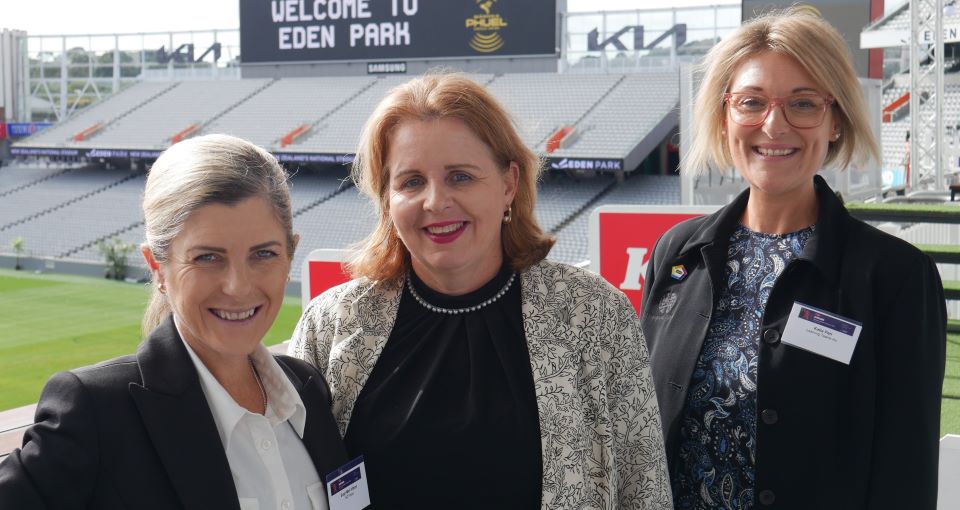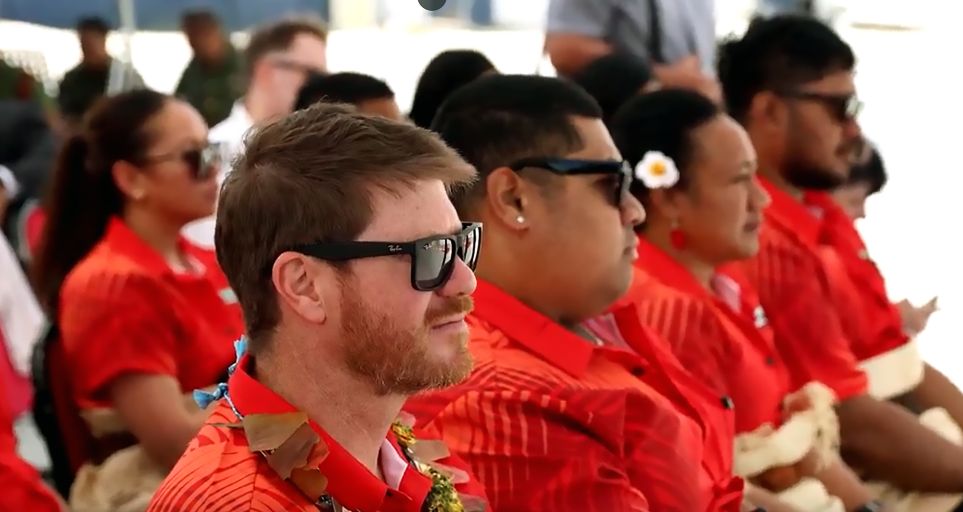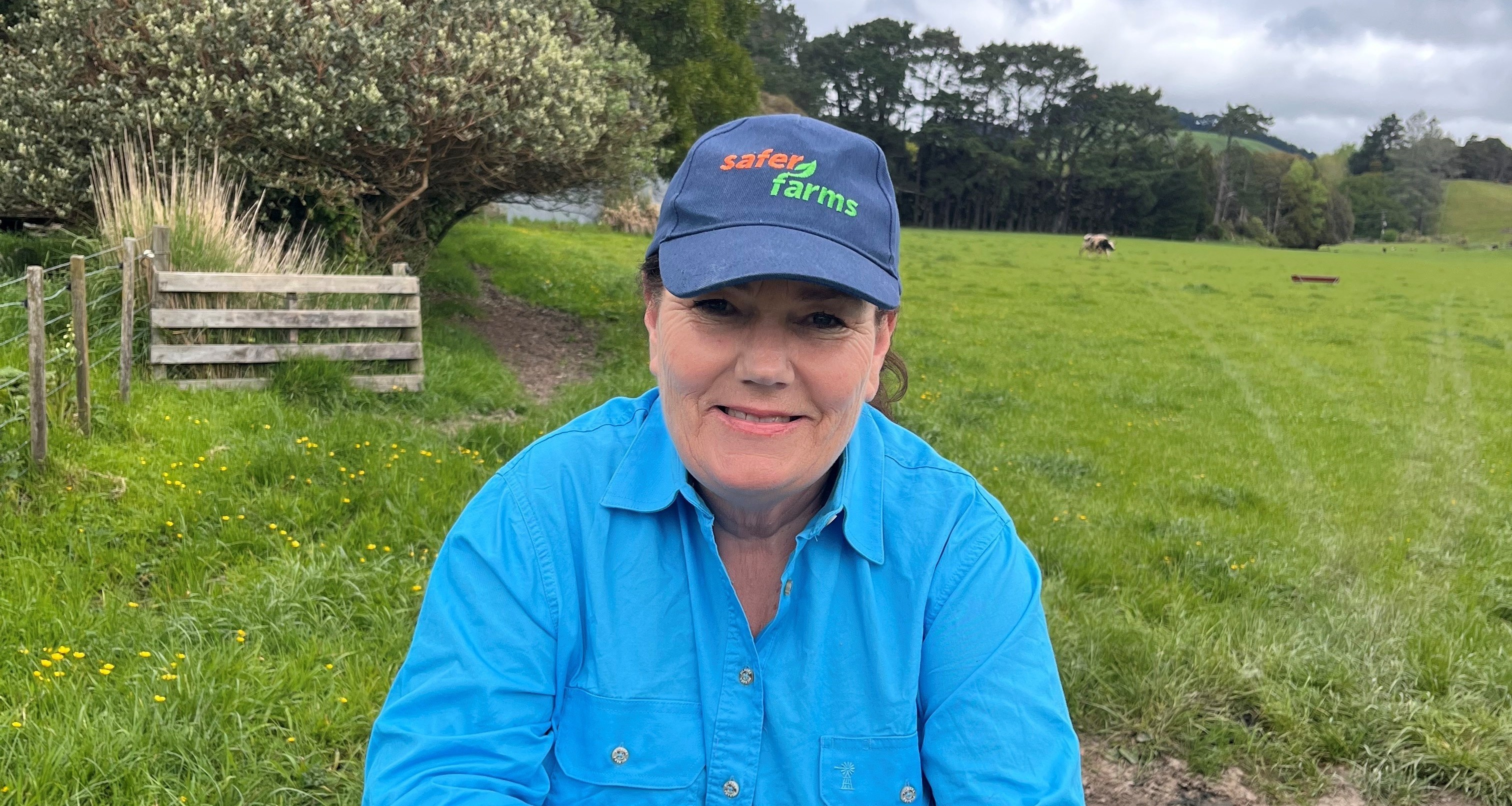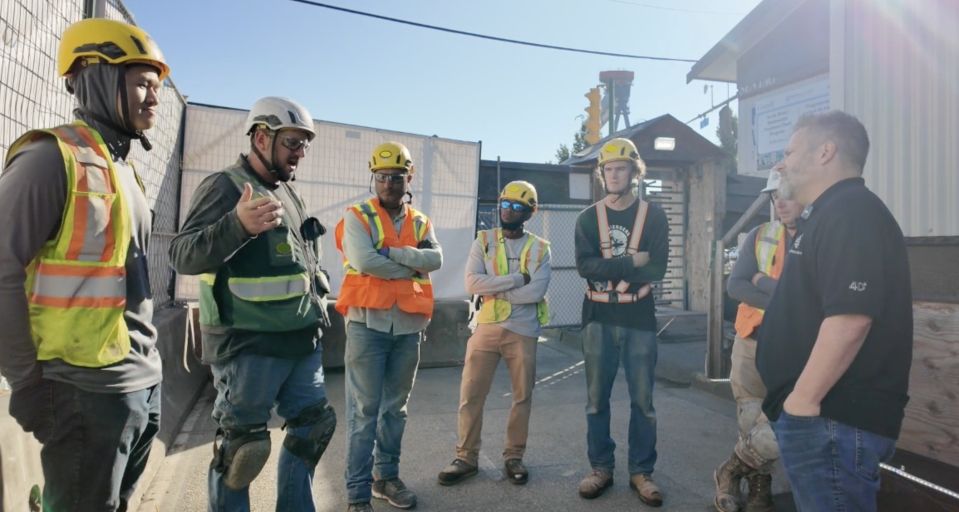Two luminaries from the Women in Safety Excellence network, Margaret van Schaik and Kate Milburn, shared MC duties in front of an enthusiastic crowd at Eden Park. This is the third time Safeguard has run this conference and the vibe is something special. There must be something that makes this event different. When we figure it out we’ll let you know.
First up was Nicole Rosie, whose most recent gig was as CE of Waka Kotahi NZTA and before that CE of WorkSafe NZ. Among the many lessons from her leadership journey was to not think of health and safety as only about compliance and risk management. “It’s about transforming organisations and people.”
She recalled starting with NZTA and visiting every site around the motu to meet people and take the temperature. The number one thing? Coffee! Head office had flash coffee machines but people on site had nothing. It might sound minor, she said, but in today’s world coffee is a basic need.
“When people have to argue for a basic need – like women’s toilets on forestry sites – you are not going to get high performance.”
She advised the audience to create roadmaps in 90-day chunks, on the basis that you can achieve two or perhaps three things in that period. “Show people how to get from here to there. The bit between strategy and frontline execution is what most people miss. You need a roadmap.”
Culture also came in for an examination, Rosie recalling from her time at Fonterra the transformation achieved when she persuaded the chief executive and his team to personally raise the visibility of H&S in the business.
“Culture is important. It’s why smart organisations use health and safety to do culture change. It’s why health and safety is at the heart of high performing businesses.”
Superintendent Mel Aitken, Director of Safer People with NZ Police, spoke about the project begun in 2018 to identify critical risks – there turned out to be seven, with one extra relating to specialist work groups. Each critical risk has an executive sponsor. “Having a sponsor is fantastic for us to leverage when we need action taken.”
A project of this scale required, as she put it, lifting some rocks and discovering whatever creepy crawlies might lie beneath. “You’re going to find some stuff you don’t want to know. But that’s a good thing. You’ve got to be comfortable with being uncomfortable.”
The worker engagement piece has proven essential to the project, which requires controls to be regularly verified: surveys, site observations, and speaking to as many people as possible. Always seeking to close the inevitable the gap between work as imagined and work as done.
“It’s easy to get a little rusty sitting at HQ. We get out and hear what people have to say.”
Kate Milburn, NZ Police manager of organisational development, talked about building your professional connections and how a new WISE initiative could help. Expanding your network takes time, requires authenticity and a willingness to show vulnerability. You should also seek to give as much as you receive.
“If we all think about who in our network we can connect someone else to, then the spider web really starts to expand and work properly.”
She described WISE Connect as a new programme to bring women in safety together. Applicants will be paired up to expand their professional network. “We think it will help develop leadership skills, share knowledge and practice, and also enhance work-life balance.”
The programme will be open to women at all stages of their careers, with the first pilot opening for registration to the wider WISE community, and running for six months.
“It’s a small, different way to be connected within the community.”
Organisational development consultant Viv Bull recalled her years with Napier Port and the culture change she helped drive. Talking to people in a structured way has informed much of her career, and at the port she reckoned she spoke personally to two-thirds of the workforce about their role and to get their ideas for improvement.
“People on the ground were passionate and knowledgeable about what they did. People didn’t feel listened to or valued. That was at the core.”
These insights were reported back in workers’ own language (anonymised) and used to establish priorities for action. Culture was changed, bit by bit. Some changes won’t work, she said, and it is wise to acknowledge that up front. “That would be good to hear, some humility.”
It’s in adversity where culture shines, at Napier Port faced crises almost every year, such as Cyclone Gabrielle and the Seddon earthquakes.
“The people brought it through. Amazing.”
Coach and consultant Katie Peri, from consultancy Learning Teams Inc, urged us not to overthink the 4Ds framework: what is Dumb, Difficult, Dangerous, Different? The framework is about sharing stories – something humans have long used to communicate danger and learnings.
“That’s what we’re reverting back to with the 4Ds – it’s a story telling format.”
What makes it powerful is its ability to build curiosity, generate critical thinking, and support critical appraisal – plus how easy it is to remember.
Peri also showcased HOPCopilot, an AI tool which records and transcribes 4D conversations, analysing them in real time, providing a report summarizing patterns and, Peri says, reducing bias and blind spots.
Author and coach Jess Stuart, who spent years in senior HR roles, talked about the tendency of many of us to suffer from imposter syndrome, which she said was better expressed as “imposter experience”.
New Zealand, said Stuart, represents a “perfect storm”, being a culture which values humility and the downplaying of achievements.
Solutions? Think about your strengths and your successes, and build a portfolio of such evidence to store away in your mind so you can retrieve them during a low moment.
“It’s easy but you have to do it often to rewire neural pathways.”
Two tips: first, take a leaf out of Buddhist teaching and approach everything with a beginner’s mind. “It gives us permission to be human and to not know all the answers.”
Second, you are not a limitless resource. Identify things which sustain and restore you and build them into your regular schedule. Your regular work schedule.
“When we have to say no to something we feel we have let them down. Instead, focus on what establishing that boundary enables you to do.”




